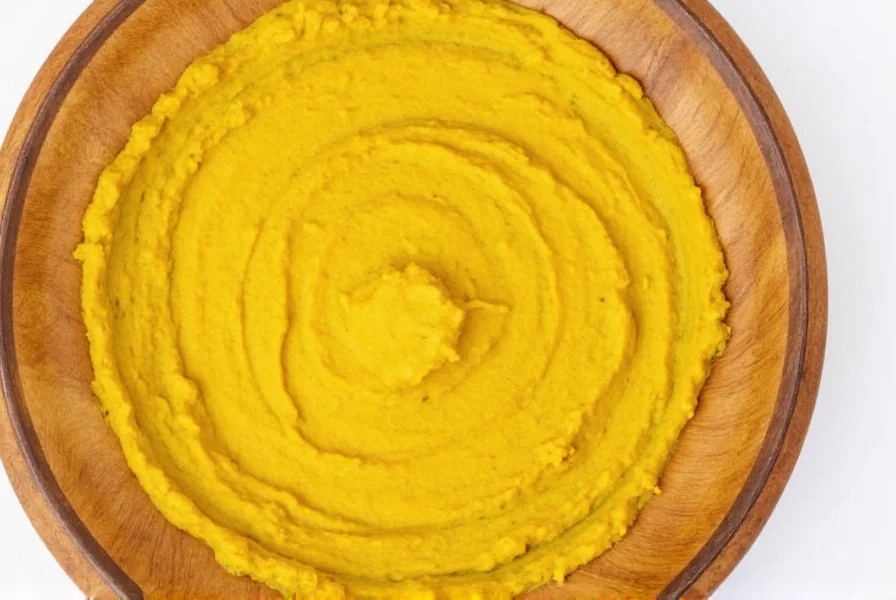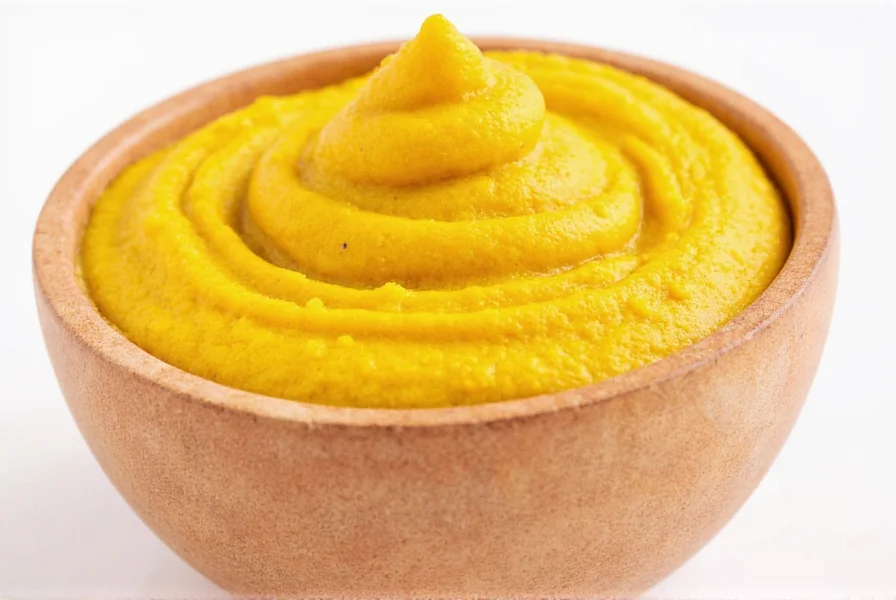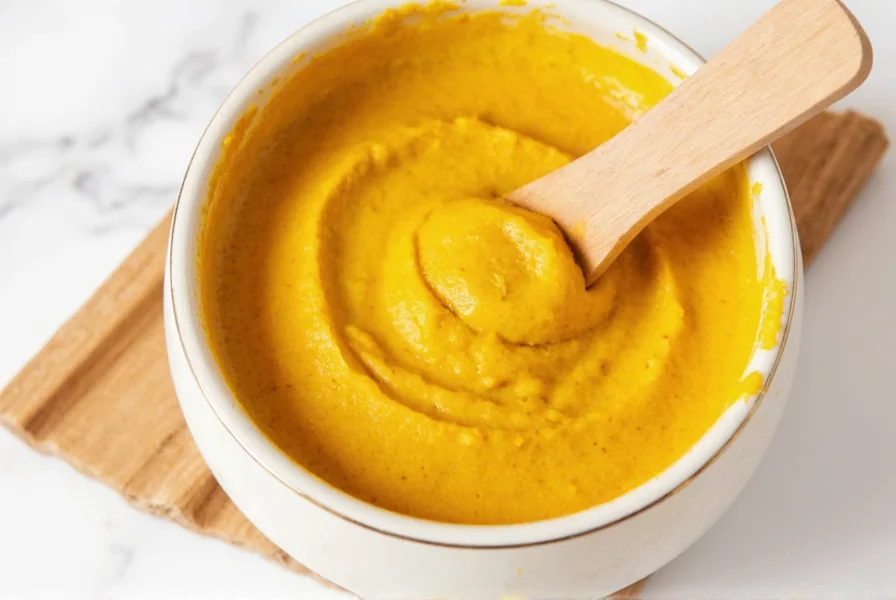Turmeric paste, also known as "golden paste," transforms the vibrant yellow spice into a versatile kitchen staple with enhanced bioavailability. This simple preparation method has been used for centuries in Ayurvedic and traditional medicine systems across South Asia, where fresh turmeric root was commonly processed into a usable form for daily consumption.
What Exactly Is Turmeric Paste?
Turmeric paste differs from plain turmeric powder by offering improved absorption and convenience. The cooking process activates curcuminoids—the active compounds in turmeric—while the addition of complementary ingredients creates a stable mixture that maintains potency longer than raw powder. Unlike store-bought options that may contain fillers, homemade turmeric paste gives you complete control over ingredients and quality.
Step-by-Step Guide to Making Turmeric Paste
Creating authentic turmeric paste requires minimal equipment and ingredients. This traditional preparation method ensures maximum potency and shelf stability.
| Ingredient | Measurement | Purpose |
|---|---|---|
| Organic turmeric powder | 1/4 cup | Primary active ingredient |
| Filtered water | 1/2 cup | Hydration and activation |
| Black pepper | 1/8 teaspoon | Enhances curcumin absorption by 2000% |
| Coconut oil or MCT oil | 1-2 teaspoons | Fat-soluble carrier for better absorption |
Preparation process:
- Combine turmeric powder and water in a small saucepan
- Simmer over low heat for 7-10 minutes, stirring constantly until thickened to a paste consistency
- Remove from heat and stir in black pepper and oil
- Cool to room temperature before storing

Practical Applications in Daily Life
Turmeric paste offers remarkable versatility across culinary and wellness applications. The concentrated form makes portioning and incorporation into recipes significantly easier than working with raw powder.
Culinary Uses
- Add 1/2 teaspoon to morning smoothies for anti-inflammatory benefits
- Stir into soups, stews, or sauces during the last 5 minutes of cooking
- Mix with yogurt or coconut milk for golden milk beverages
- Combine with olive oil and lemon juice for salad dressings
- Incorporate into rice dishes or vegetable roasting preparations
Wellness Applications
Traditional wellness practices utilize turmeric paste for its enhanced bioavailability. The combination of turmeric with black pepper (piperine) increases curcumin absorption by up to 2000%, according to research published in Planta Medica. Many people incorporate 1/4-1/2 teaspoon daily into their routine as part of a balanced approach to wellness.
Scientific Perspective on Benefits
Current research indicates turmeric's active compound curcumin demonstrates promising anti-inflammatory and antioxidant properties. A comprehensive review in the Journal of Medicinal Food noted curcumin's potential benefits for joint health and metabolic function. However, researchers consistently emphasize that:
- Curcumin has naturally low bioavailability without enhancement
- Most studies use concentrated extracts, not dietary amounts
- Effects are generally modest compared to pharmaceutical interventions
- Long-term safety data for high doses remains limited
The paste preparation method directly addresses the bioavailability challenge through the addition of piperine from black pepper and healthy fats, making it a more effective delivery method than turmeric powder alone.
Storage and Shelf Life Considerations
Proper storage maintains potency and prevents spoilage:
- Store in airtight glass container in refrigerator
- Use within 2-3 weeks for maximum potency
- Freeze in ice cube trays for longer storage (up to 3 months)
- Always use clean utensils to prevent contamination
Signs of spoilage include mold growth, sour smell, or significant color change from bright yellow to dull orange.
Safety Considerations and Interactions
While turmeric paste is generally safe for culinary use, certain considerations apply:
- May interact with blood thinners like warfarin
- Potentially affects diabetes medication metabolism
- High doses may cause digestive discomfort in sensitive individuals
- Consult healthcare provider if pregnant, nursing, or managing health conditions
The National Center for Complementary and Integrative Health recommends limiting supplemental curcumin to 500-2,000 mg daily, which translates to approximately 1/4 to 1 teaspoon of properly prepared turmeric paste.
Troubleshooting Common Preparation Issues
Even experienced makers encounter occasional challenges with turmeric paste preparation:
- Too thin: Continue simmering until desired thickness achieved
- Too thick: Add small amounts of warm water while stirring
- Bitter taste: Reduce cooking time; avoid boiling
- Separation: Stir thoroughly before each use; remix if oil separates
- Staining: Use glass or stainless steel utensils; clean immediately

Comparing Preparation Methods
Different preparation approaches yield varying results in terms of potency and usability:
| Method | Absorption Rate | Shelf Life | Best For |
|---|---|---|---|
| Dry turmeric powder | Low (1-5%) | 1-2 years | Cooking applications |
| Basic turmeric paste | Moderate (10-20%) | 2-3 weeks | Daily wellness routines |
| Golden paste (with oil) | High (up to 2000%) | 2-3 weeks | Maximum bioavailability |
| Commercial extracts | Variable | As labeled | Therapeutic applications |
Conclusion
Turmeric paste represents a practical bridge between traditional wisdom and modern understanding of nutrient absorption. By transforming turmeric into a more bioavailable form through simple preparation, this ancient spice becomes significantly more effective for both culinary enhancement and wellness support. The key to maximizing benefits lies in proper preparation technique, appropriate daily amounts, and realistic expectations about its effects within a balanced lifestyle.
How much turmeric paste should I take daily?
For general wellness, most experts recommend 1/4 to 1/2 teaspoon of prepared turmeric paste daily. This amount provides approximately 200-500 mg of curcumin, aligning with research-supported doses. Always start with smaller amounts to assess tolerance and consult your healthcare provider if taking medications or managing health conditions.
Can I use fresh turmeric instead of powder to make the paste?
Yes, you can use fresh turmeric root by grating 1/2 cup of peeled root and simmering with 1/4 cup water until thickened. Fresh turmeric paste typically has a brighter flavor but shorter shelf life (about 10 days refrigerated). The curcumin content may vary based on root quality and growing conditions.
Why does turmeric paste require black pepper?
Black pepper contains piperine, which inhibits certain metabolic processes that break down curcumin in the digestive system. Research shows this combination can increase curcumin absorption by up to 2000%. Without black pepper, your body processes and eliminates curcumin much more quickly, reducing its potential benefits.
Does turmeric paste stain more than powder?
Concentrated turmeric paste can stain surfaces and clothing more intensely than dry powder due to its liquid content. To prevent stains, use glass or stainless steel containers, clean spills immediately with soapy water, and consider wearing an apron during preparation. Most stains respond well to immediate treatment with dish soap and warm water.
Can I freeze turmeric paste for longer storage?
Yes, freezing turmeric paste in ice cube trays then transferring to airtight containers preserves potency for up to 3 months. Each cube typically contains about 1 teaspoon. Thaw individual portions as needed in the refrigerator overnight. Freezing maintains quality better than extended refrigeration, which can lead to gradual potency loss after 3 weeks.
Frequently Asked Questions
How much turmeric paste should I take daily?
For general wellness, most experts recommend 1/4 to 1/2 teaspoon of prepared turmeric paste daily. This amount provides approximately 200-500 mg of curcumin, aligning with research-supported doses. Always start with smaller amounts to assess tolerance and consult your healthcare provider if taking medications or managing health conditions.
Can I use fresh turmeric instead of powder to make the paste?
Yes, you can use fresh turmeric root by grating 1/2 cup of peeled root and simmering with 1/4 cup water until thickened. Fresh turmeric paste typically has a brighter flavor but shorter shelf life (about 10 days refrigerated). The curcumin content may vary based on root quality and growing conditions.
Why does turmeric paste require black pepper?
Black pepper contains piperine, which inhibits certain metabolic processes that break down curcumin in the digestive system. Research shows this combination can increase curcumin absorption by up to 2000%. Without black pepper, your body processes and eliminates curcumin much more quickly, reducing its potential benefits.
Does turmeric paste stain more than powder?
Concentrated turmeric paste can stain surfaces and clothing more intensely than dry powder due to its liquid content. To prevent stains, use glass or stainless steel containers, clean spills immediately with soapy water, and consider wearing an apron during preparation. Most stains respond well to immediate treatment with dish soap and warm water.
Can I freeze turmeric paste for longer storage?
Yes, freezing turmeric paste in ice cube trays then transferring to airtight containers preserves potency for up to 3 months. Each cube typically contains about 1 teaspoon. Thaw individual portions as needed in the refrigerator overnight. Freezing maintains quality better than extended refrigeration, which can lead to gradual potency loss after 3 weeks.











 浙公网安备
33010002000092号
浙公网安备
33010002000092号 浙B2-20120091-4
浙B2-20120091-4